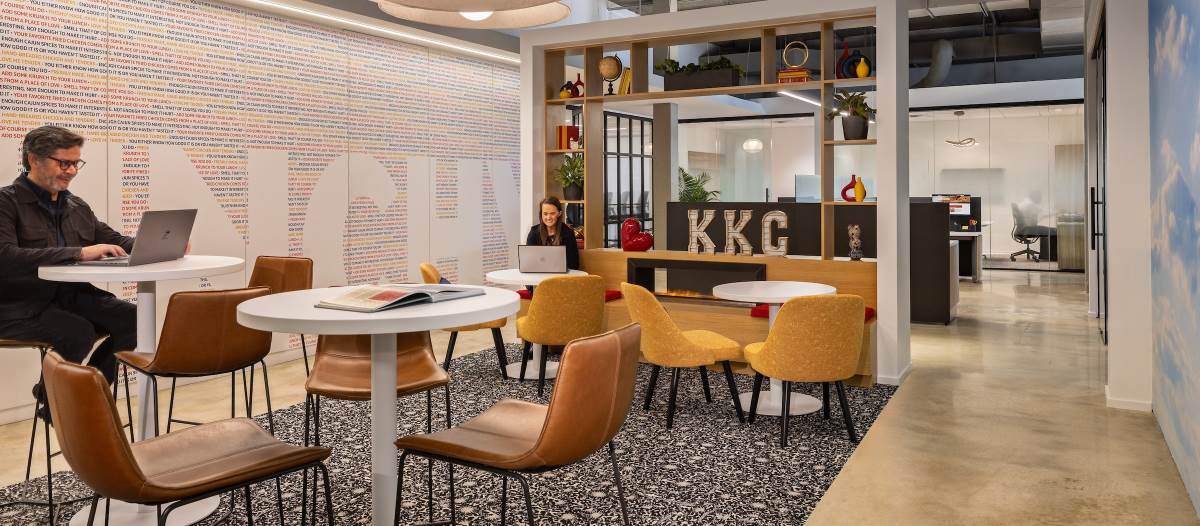Occupants WELL-being
Exploring growth of the building standard

For a facility manager, there is nothing more important than ensuring the health and safety of a building’s occupants – and there is perhaps no space where this matters more than the restroom.
The cleanliness level of a commercial restroom can affect a business’s bottom line as well. A Cintas Corp. survey of 2,036 U.S. adults found that 74 percent said that dirty restrooms would cause them to have a negative perception of a business; and 68 percent said they would have a low opinion of a business if its restroom contained empty hand soap, toilet paper and paper towel dispensers.
A recent study from research and insight consulting agency Savanta revealed that nearly three quarters of North Americans do not consider the air and water in offices, condominiums and hotel buildings to be safe.
In other words, FMs are tasked with not only making sure their restrooms look good, but they must also specify products and adopt processes that help their occupants stay safe, clean and productive.
That is where the WELL Building Standard (WELL) comes in. Launched in 2014 and backed by the latest scientific research, WELL is a rating system created by the International WELL Building Institute (IWBI) that focuses on how buildings affect human health and wellness.
Developed over a 10-year span, WELL works at any scale – from a single interior space to an entire organization. It offers solutions for attracting top talent, raising productivity, cultivating long-term resilience, getting back to business during pandemic times and much more.
For the last decade, WELL has guided design for thousands of buildings around the world. By providing clear guidelines for creating spaces that keep people healthy and productive, the standard is pivotal for creating building environments that contribute to a brighter, healthier future.
By crafting spaces that adhere to the WELL Building Standard, facilities are better equipped to serve the occupants inside and can see long-term energy efficiency savings and experience greater occupancy demand.
Specifying WELL-certified restroom products is a step in the right direction toward making buildings safer and healthier for both occupants and visitors. But how can FMs know for sure that they are specifying WELL-certified restroom products? What else should they know about the history of the standard? And now that it is 10 years old, how will the standard evolve and grow?
How WELL was born
The WELL Building Standard was pioneered in 2013 by Delos, a global wellness leader with a mission to enhance health and well-being in the spaces where people live, work and play. It was the culmination of years of rigorous research in collaboration with leading physicians, scientists and industry professionals.
Following a two-year pilot program and a formal peer review process, version 1.0 of WELL was launched on Oct. 20, 2014, at the inaugural WELL Building Symposium in New Orleans, Louisiana, USA. It was the world’s first building standard to focus on enhancing people’s health and well-being through the built environment.
Administered by the IWBI and third-party certified through IWBI’s collaboration with the Green Business Certification Inc. (GBCI), WELL is designed to work harmoniously with the LEED Green Building Rating System, the Living Building Challenge and other leading global green building standards.
The current standard sets performance requirements in 10 concepts relevant to occupant health in the built environment: air, water, nourishment, light, movement, thermal comfort, sound, materials, mind and community. Each concept is based on medical research concerning how environments affect human health.
As FMs place a larger emphasis on human health in addition to building health, the popularity of WELL has grown significantly. To date, WELL has been adopted by nearly 44,000 projects spanning 4.85 billion square feet of real estate across 127 countries. In addition, thousands of organizations have embraced WELL to help guide their respective health leadership journeys.
Applying WELL to the commercial restroom
Understanding which restroom products meet WELL guidelines for water and materials is crucial for FMs, as it promotes product transparency, helps a facility obtain WELL credits and keeps building occupants safe and healthy.
The primary WELL concept that FMs should focus on is water, as this is where commercial restroom design provides the most direct impact. The WELL Water Concept is a method for monitoring the quality, distribution and control of water in a building, addressing the availability and contaminant thresholds of drinking water, as well as water management practices that avoid damage to building materials and environmental conditions.
For commercial restroom design, the most relevant ideas within the WELL Water Concept apply to handwashing and hygiene. Facilities can obtain WELL credits in the W08 Hygiene Support criteria by using products that support effective handwashing.
For example, sensor-activated faucets, soap dispensers and hand dryers promote better hygiene by reducing the number of surfaces that users touch when they use the restroom, and hands-free flushometers enable contactless use while distinguishing between passersby and actual users to minimize accidental flushes.
Line-purge technology for faucets and flushometers reduces the serious water safety risks associated with prolonged system inactivity, which is especially important as workers continue to return to offices. Nonpotable water use indication allows facilities to use reclaimed water for flushing while avoiding the risk of occupants consuming it, thus earning WELL credits in the W09 On-site Nonpotable Water Reuse criteria.
In addition, select restroom products contain enhanced ingredient disclosures that are third-party verified to help earn WELL credits in the X07 Materials Transparency criteria.
By disclosing product makeup, facility owners can feel confident that their guests are not exposed to harmful materials, thereby earning credits in the X01 Materials Restrictions criteria. Environmental product declarations (EPDs) and Health product declarations (HPDs) promote product transparency to help specify fixtures with sustainable materials and substances.
The future of WELL
Today, the WELL v2 Building Standard launched in 2018 is the most robust standard for advancing health and well-being. The updated standard offers solutions for attracting top talent, raising productivity, cultivating long-term resilience, getting back to business post-pandemic and much more. Giving a project a WELL v2 certification can help a facility make more people feel safer and comfortable in the restroom.
According to IWBI, one of the primary goals in developing WELL v2 was to create a single version of WELL that could evolve to meet the needs of any type of building in any part of the world. To make WELL v2 a better fit for people and spaces for everyone, WELL implemented a strategy of localization, considering regional health concerns, cultural norms and market realities. As a result, WELL v2 has been regularly and proactively adapted to varying contexts and constructs, making it even more relevant and readily applicable to spaces and places worldwide.
While there is still plenty of work to be done, WELL has provided an evidence-based roadmap for scaling health across organizations for a decade. WELL currently offers buildings a targeted approach by focusing on a subset of three third-party verified strategies that address specific themes such as health, safety and performance.
The first, the WELL Health-Safety Rating, is a pathway for addressing acute health threats, including COVID-19 and beyond. The WELL Performance Rating can be used to measure, benchmark and improve building performance to support human health and well-being. And the WELL Equity Rating helps facilities act toward diversity, equity and inclusion goals while improving company culture and employee health.
The WELL Community Standard aims to impact individuals not just within the walls of their home or workplace, but throughout the public spaces where they spend their days. A WELL community is designed to support health and well-being across all aspects and areas of community life. The vision for a WELL community is inclusive, integrated and resilient, with a strong community identity fostering high levels of social interaction and engagement.
The places where we spend our time have a major impact on our well-being. As the second-most visited space in any commercial building, the restroom needs to stay on the cutting edge of health and wellness.
By understanding the need for healthy buildings and the importance of the WELL Building Standard, as well as exploring how commercial restroom products can help achieve WELL certifications, FMs can gain valuable peace of mind knowing that occupants are enjoying healthy conditions inside the buildings where they work and visit.

Read more on Occupancy & Human Factors , Real Estate and Workplace
Explore All FMJ Topics









